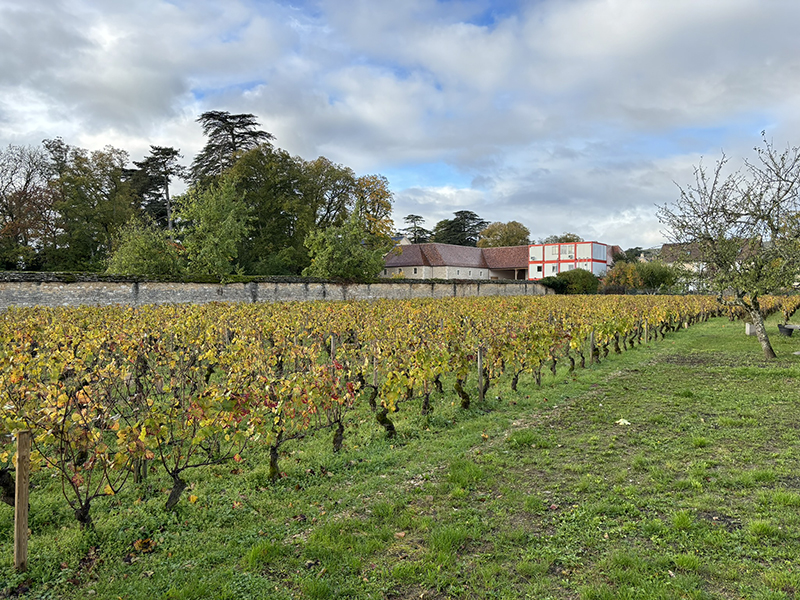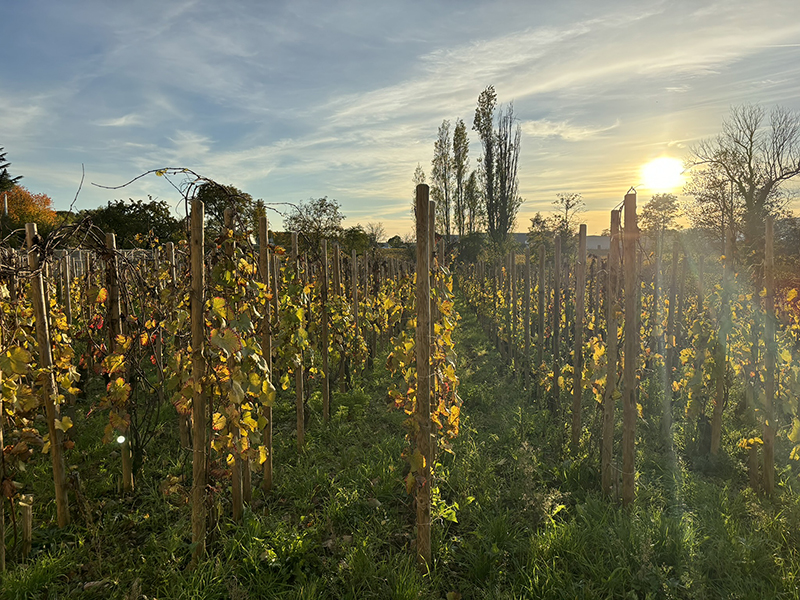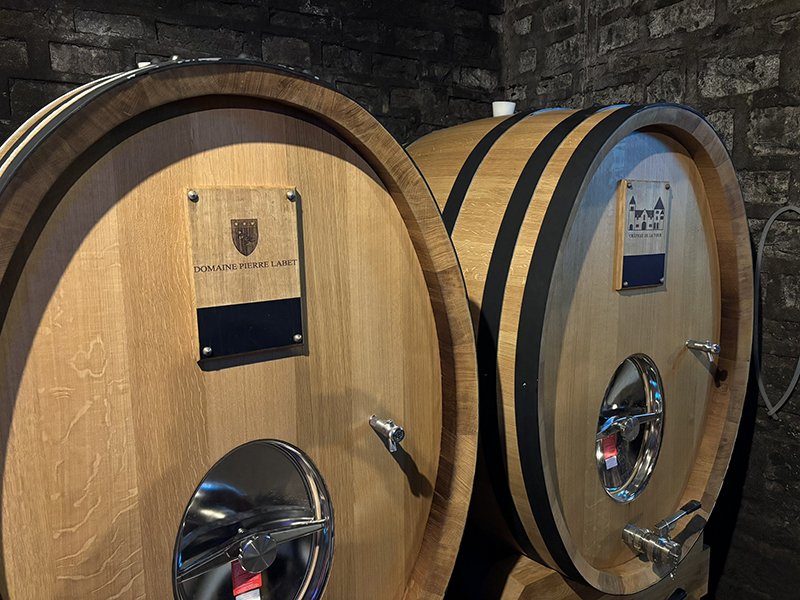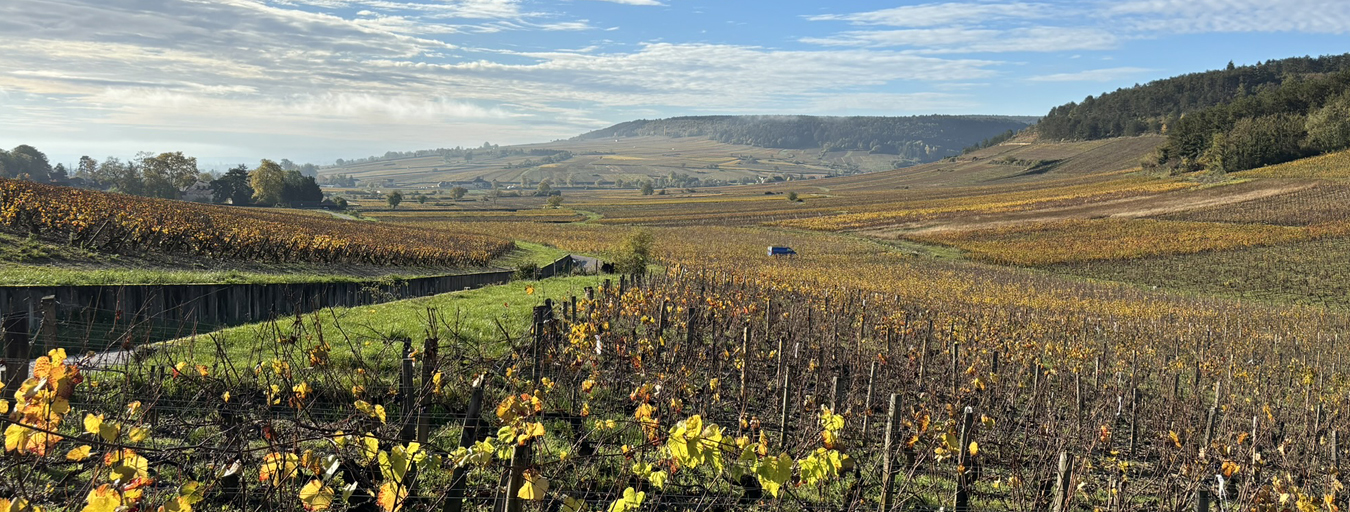Finally, some volume. Having tasted in painfully empty cellars over the past few years, particularly in the Côte de Beaune, 2022 has arrived like a breath of fresh air. After the historically tiny 2021 crop, smiles are back on the faces of growers, whose cellars are now full of the generous 2022 and 2023 vintages.
ÇA COÛTE COMBIEN?
Your first two questions are, naturally, Are the wines any good? and What about the prices? The answer to the first is easy: yes! 2022 is a winner, for both reds and whites. A warm year which has produced surprisingly fresh wines, of both poise and substance, whose terroirs are clearly visible.
The second question is harder. At the time of writing, in December 2023, prices are still coming in from the producers whose wines will be released in January. Others will remain unknown for months – although the C&B ‘Burgundy season’ begins shortly, it now takes up around half the year… Early indications suggest a spread of approaches. So far, just over half have left prices unchanged versus 2021 (a year in which pricing increased substantially in the face of small volumes). A minority have increased prices marginally, whilst a much smaller minority have decreased them. Our congratulations and thanks to this last group.
As we have been saying about Bordeaux for years, the simple analysis customers make is, “Can I buy this wine from a comparable back-vintage more cheaply?” If so, there is little reason to buy the new release. Whilst this should be borne in mind by fine wine producers worldwide, Burgundy production levels are of a different order of magnitude. At the premier and grand cru level, allocations remain tighter than in Bordeaux (outside the very top estates). That tension sustains the pricing, for now. Everyone has their limit though, and the danger is that those limits may be closer than some realise.
Producers are certainly aware that they are walking something of a tightrope, but a combination of high bulk and negociant prices and inflated land values has inevitably fed through into their calculations.

THE GROWING SEASON
2022 was hot. Temperatures peaked in a series of three heatwaves, in mid-June, mid-July and early August. However, there was also rain, at the beginning and end of June, with regular showers from mid-August through to harvest. A six-week dry period, including the whole of July, pushed some younger vines into temporary shut-down. Nonetheless, the result was a vintage of expressive ripe fruit, with balancing freshness and moderate alcohol.
Taking it from the top, winter saw some freezing temperatures in January and mid-February but, on the whole, was milder and drier than average. There is a general move towards later winter pruning in order to delay budbreak and avoid spring frost damage. March is ideal but in practice, it is a long process, which usually means starting in November or December. As Edouard Labet of Château de la Tour and Domaine Pierre Labet put it, “Later pruning has borne fruit (literally!) as we have noticed very little [frost] damage.”
March was cool, slowing down the start of growth. After the first tender shoots emerged in early April, a cold front from the north heralded the habitual period of frost. This first hurdle of the season, which proved so devastating in 2021, was cleared in 2022. Four nights of frost in the period between 3rd and 11th April left minimal mark, most vines still being at the ‘bud-in-cotton’ or pre-budbreak stage. Sighs of relief all around.
Warm spring weather from mid-April resulted in rapid growth in the vineyards. Flowering started around 20th May and was over by month-end, going through quickly thanks to the dry, warm conditions, putting the season around a fortnight ahead of average (until the April growth spurt, it had lagged behind). In the words of Domaine de l’Arlot’s Géraldine Godot, “Clusters of grapes started to become visible, holding the promise of a generous harvest.”
June alternated between heat and rain, whilst fortunately avoiding the fungal diseases which can become a blight under such conditions. 75mm of rain fell from 21st to 26th June. As Aubert de Villaine put it, “This rainfall, which helped the vines to overcome the heatwaves that followed, was another key factor in the exceptional success of the vintage at Vosne-Romanée.”
July saw the peak of the summer heat and was totally dry. This was the period of struggle for younger vines and those with shallower root networks, although the preceding rain eased what would have been a very tricky phase. Blockages of photosynthesis at this point, although not experienced by all, may have contributed to the retention of tartaric acidity and moderate final alcohol levels which, in most cases, have come in at around 13-13.5% abv.
As Géraldine Godot observed, “Sugar levels developed well, although in the first half of August, we observed that they were less pronounced in certain vines, indicating a blockage.” However, the effect of showers and cooler temperatures in mid-August was immediately apparent in the vines, providing the boost needed to get them through to harvest at full maturity.
Picking started in the fourth week of August – early, but not the earliest ever. It was generally finished by the second week of September.

IF YOU CAN’T TAKE THE HEAT
20 years on from the scorching 2003 vintage, is Burgundy learning to live with climate change?
Édouard Labet commented, “Global warming is a real challenge for our viticulture, but it is also ‘beneficial’ in many ways when it comes to winemaking: optimal ripeness, few diseases, smooth tannins, gourmandise and freshness.” There does seem to be a newfound balance to the wines made from warm Burgundian summers such as 2019, 2020 and 2022. The pejorative année solaire style of (over-) ripe fruit is no longer an inevitable result of summer heat.
Raised canopies, arched vine canes and cover crops, as well as cellar innovations such as judicious whole-bunch fermentation and whole-berry vinification intégrale, are proving valuable in the quest for freshness and harmony. Pierre and Louis Trapet, the next generation at Domaine Trapet, are re-planting their holdings in both Burgundy and Alsace on single-post echalas (as more commonly seen in Côte-Rôtie), for similar reasons.
The uptake of organics and biodynamics has also contributed to a more robust, resilient Burgundian vineyard. As Pierre de Benoist of Domaine de Villaine said, “Our organic and biodynamic methods have allowed us, we hope, to offer you wines as close as possible to the expression of their terroirs.”
Jean-Marc Vincent offered some thoughts on the theme of increased fertility in Burgundy, due to drier summers and greater luminosity. He has observed thicker grape skins as a result. As he said, the question is, “How to make wine in these new conditions.” New clones, higher-density planting and manual vineyard work, including bud-rubbing and tressage (vine arching) were among his suggestions. He and Anne-Marie have not had a summer holiday for some time…
There appears to be a genuine way forward in Burgundy in the era of climate change but, to play the sceptic for a moment, it feels like a precarious balance. I wouldn’t want to speculate on the consequences of another tightening of the climate ratchet. It is a short step from ‘good thanks to the weather’ to ‘good despite the weather’. But the mood is upbeat – as one grower told me, “We are not going to be planting Syrah any time soon.”

TASTING, ORDERING, DRINKING…
As I wrote in our Domaine Leflaive release, the 2022s are a joy to taste and I hope this will come through in our January en primeur tastings in London, Edinburgh and Asia, which mark the start of the C&B Burgundy season proper. There are wines that will age gracefully and others that will be too tempting to drink in their youth.
I love the start of Burgundy season. Planning for future enjoyment of the 2022s is the perfect antidote to winter in the UK (particularly if you are also enduring dry January). We are delighted to have a little more volume this year – it has been tiresome to have to preface every conversation with an apology for the small quantities and we thank you for having been patient. Nonetheless, things will inevitably sell out, so do get in touch once you have read the notes and, ideally, tried the wines. See you at the tastings!
GUY SEDDON
HEAD OF FINE WINE BUYING
DECEMBER 2023
For further information visit our Burgundy Hub for more information about our producers and 2022 vintage releases.

